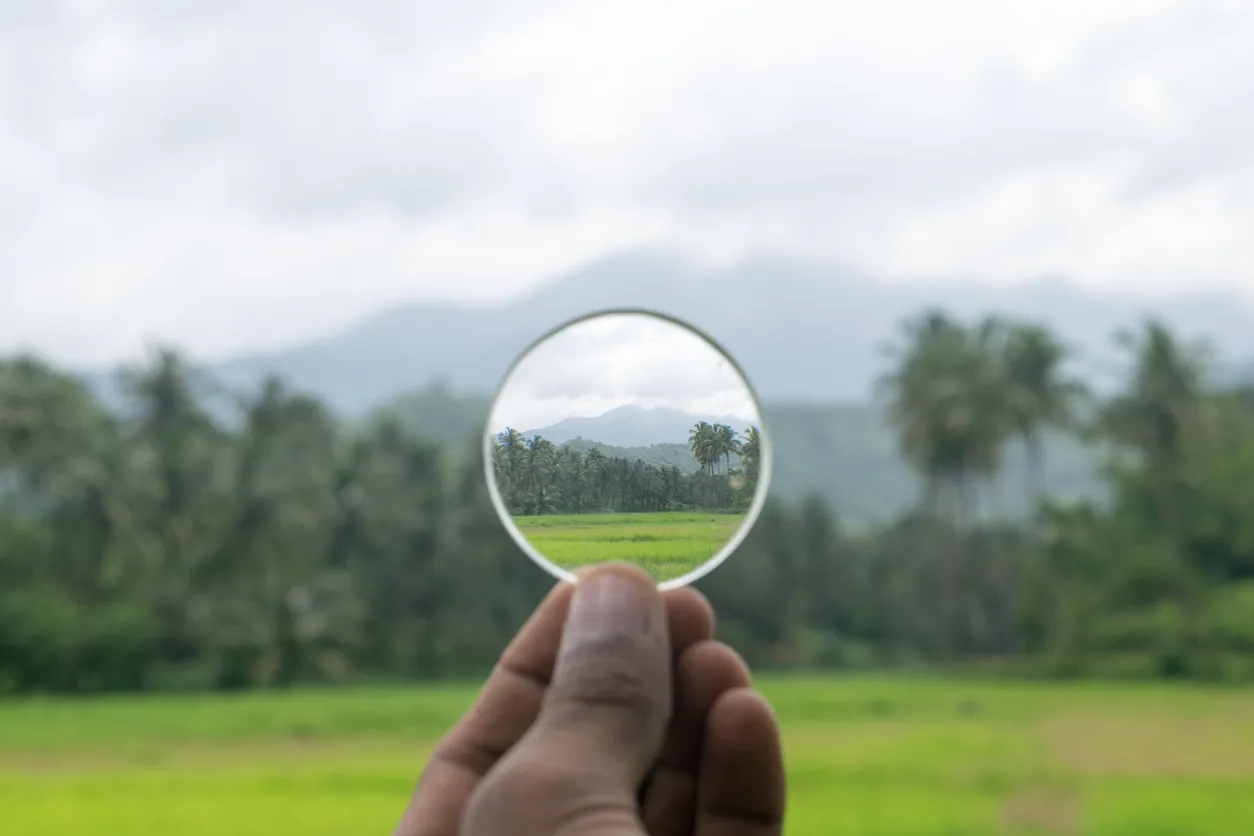Carbon footprint, global warming, extreme weather warning, droughts, heatwaves - these are some events that dominate news cycles and media headlines, but more importantly - personal experiences. Naturally, there are heavy emotional responses that come with being exposed to such information and events.
Here’s the thing - You might be an outspoken activist or someone who worries quietly, passionate about environmental protection or someone who is unsure how to address the impacts of climate change. Regardless of differing responses and approaches to the issue, the emotional impact is undeniable: the environmental changes and threats that we face evoke genuine distress, anxiety, grief, and sorrow.
This blog post is not meant to dive into the complex nature of climate change, but about understanding the psychological impacts experienced by many who are experiencing climate change events or ongoing information about it.
Eco-Anxiety, Eco Grief & Solastalgia
What do these terms mean? Ecological grief, otherwise known as Eco-Grief refers to experienced sadness or mourning resulting from environmental loss and/or anticipated future loss of land, ecosystems, or ways of living. Eco-anxiety is a form of anxiety directly related to environmental issues, resulting in fear about the sustainability of our planet and overwhelming worry about the future.
Solastalgia refers to experiencing feelings of distress and sadness when your home environment changes and gets damaged. It is the feeling of homesickness without having left home, making it challenging to find comfort and connection. For communities with relational ties to land, including our Indigenous communities in Canada, solastalgia is attached to loss of identity, traditions, and culture.
The environment is our home, and when it feels threatened, it's natural to experience fear, anger, sadness, or anxiety. There is an intersection between the environment and our mental health which is immensely important to understand. The mental health impacts of solastalgia, eco-grief and anxiety include increased stress, withdrawal, sleep difficulties, feelings of insecurity about one’s existence, feelings of anger towards those who have not addressed the issue, overwhelm, grief, powerlessness - thinking it's too late to save the planet, or even panic and/or depression.
The Impact of Eco-Anxiety in a Canadian Context
A national survey of 1,000 Canadians aged 16 to 25 revealed some startling figures: fifty six percent of respondents indicated they felt afraid, sad, and powerless related to climate with seventy three percent expressing they think the future is scary as a result of climate change. These figures reflect a broader mental health crisis, with over thirty percent of participants saying they are hesitant about having children due to climate change and many experiencing daily life disruptions due to anxiety.
Understanding eco-grief, eco-anxiety, and Solastalgia in Canada requires recognizing its varied impacts across different communities. Historically marginalized communities are most likely to be emotionally impacted by the environmental threats. In addition, we must recognize that simplifying emotional experiences into brief terms does not fully encapsulate the distressing emotional response and personal experiences that some communities and individuals face as a result of environmental shifts. While emotional reactions to environmental changes may be a shared experience, the specific anxieties one feels are unique to each individual and community.
Psychology and the Environment
There is a profound connection between psychology and the environment, illustrating the relationship between the external and internal worlds that we as humans experience. Our capacity for empathy allows us to feel emotions in response to external events, even if they don’t directly impact our daily lives.
Everyone has an emotional threshold, known as ‘the window of tolerance’. This means that we can only tolerate information and events for so long before we lose our ability to stay calm and connected. Our nervous system is not designed to stay relaxed in the face of a threat, it is meant to respond. Everyone reacts differently to these events - some may become angry or frustrated, while others may shut down. Shutting down doesn’t mean we don’t care, but often means we feel overwhelmed and believe that our actions may be insignificant.
Dr. Renée Lertzman, environmental psychologist, highlights the need for attunement within ourselves and with others, as we experience the emotional impacts of environmental changes. Finding the tools to connect to ourselves and with one another is an important piece of being able to manage emotionally, but also as a key aspect of working towards bettering our environment.
Building Resilience through community, connection, and meaningful action
- Find Your Community: You are not alone. Environmental distress is a shared experience. Connecting with people who understand you can reduce isolation and provide a sense of community. Engaging with others through intentional discussions and participating in positive actions within community groups can foster a sense of hope for the future.
- Stay Mindful: While recognizing that not all have the privilege of removing themselves from information, when we do have that opportunity, be mindful of your information consumption. It’s okay to step back when the weight of information becomes too much or to be intentional with when and where you receive information.
- Focus on Meaningful Actions: Reflect on the beliefs and values that are most important to you and engage in activities that bring meaning to your life. Contribute to positive environmental initiatives, such as participating in local projects like the Butterflyway Project. The connection between positive environmental action and connection to our values has a positive impact on our wellbeing while providing a sense of hope and agency.
- Seek Support: The emotional reactions and mental health impacts of climate change are a very real experience with considerable mental health impacts. If you are struggling, consider seeking the support of a therapist. Therapy helps us to explore our thoughts and emotions more deeply and find the unique tools that work for you.
Conclusion
With ongoing events that constantly provoke fear, experiences of environmental distress are a growing commonality. To fully understand solastalgia, eco-grief and eco-anxiety, we need to explore the unique experiences and needs of each individual and community, recognizing the deep connection between psychology and the environment. Connecting with like-minded individuals, fostering a sense of community, and engaging in meaningful activities are all important steps to ensure we continue to feel empowered in the midst of adversity.
- Facing mental health challenges? Layla is here to help - Individuals, couples, and families use Layla for personalized, convenient therapy. Layla matches you to a suitable therapist and manage the therapy process in a warm, dependable manner, supporting you on your journey to better health. Learn more here
- New to therapy? Here's your beginner guide - Starting therapy can evoke feelings of vulnerability, but knowing what to expect can help. The journey is individualized, with no exact right or wrong way. During the first session, typically administrative matters are discussed, goals are set, and you and your therapist will get to know each other. Fit between you and you therapist is very important for your outcomes, and it's okay to switch if the fit isn't right. Therapy is adjusted to your timeline and constraints, and can range from weekly to monthly sessions. Reflecting on what you wish to accomplish can guide the process
REFERENCES
Comtesse, H., Ertl, V., Hengst, S., Rosner, R., & Smid, G. (2021). Ecological Grief as a Response to Environmental Change: A Mental Health Risk or Functional Response? Environmental Research and Public Health , 18(2). https://doi.org/10.3390/ijerph18020734
Galway, L., & Field, E. (n.d.). Climate emotions and anxiety among young people in Canada: A national survey and call to action. The Journal of Climate Change and Health, 9. https://doi.org/10.1016/j.joclim.2023.100204
Hamdon, C., Huynh, J., Marinna-Grant, A., & Mussett, K. (2021). Reconciling Relationships: Critical Perspectives on Eco-Anxiety, Human-Nature Dichotomies, and Urban Gardening.https://open.library.ubc.ca/soa/cIRcle/collections/graduateresearch/66428/items/1.0400157
Lertzman, R. (2019). How to turn climate anxiety into action [Youtube Video]. TEDWomen. https://www.ted.com/talks/renee_lertzman_how_to_turn_climate_anxiety_into_action?language=en
Mental Health Commission of Canada. (2023, April 21). Understanding and coping with eco-anxiety. https://mentalhealthcommission.ca/resource/understanding-and-coping-with-eco-anxiety/
Schwartz, S.E.O., Benoit, L., Clayton, S. et al. Climate change anxiety and mental health: Environmental activism as buffer. Curr Psychol 42, 16708–16721 (2023). https://doi.org/10.1007/s12144-022-02735-6
Upward, K., Usher, K., Saunders, V., & Maple, M. (2023). Understanding solastalgia from a decolonised, Indigenist lens: a scoping review. Frontiers Public Health, 11. https://doi.org/10.3389/fpubh.2023.1261247




